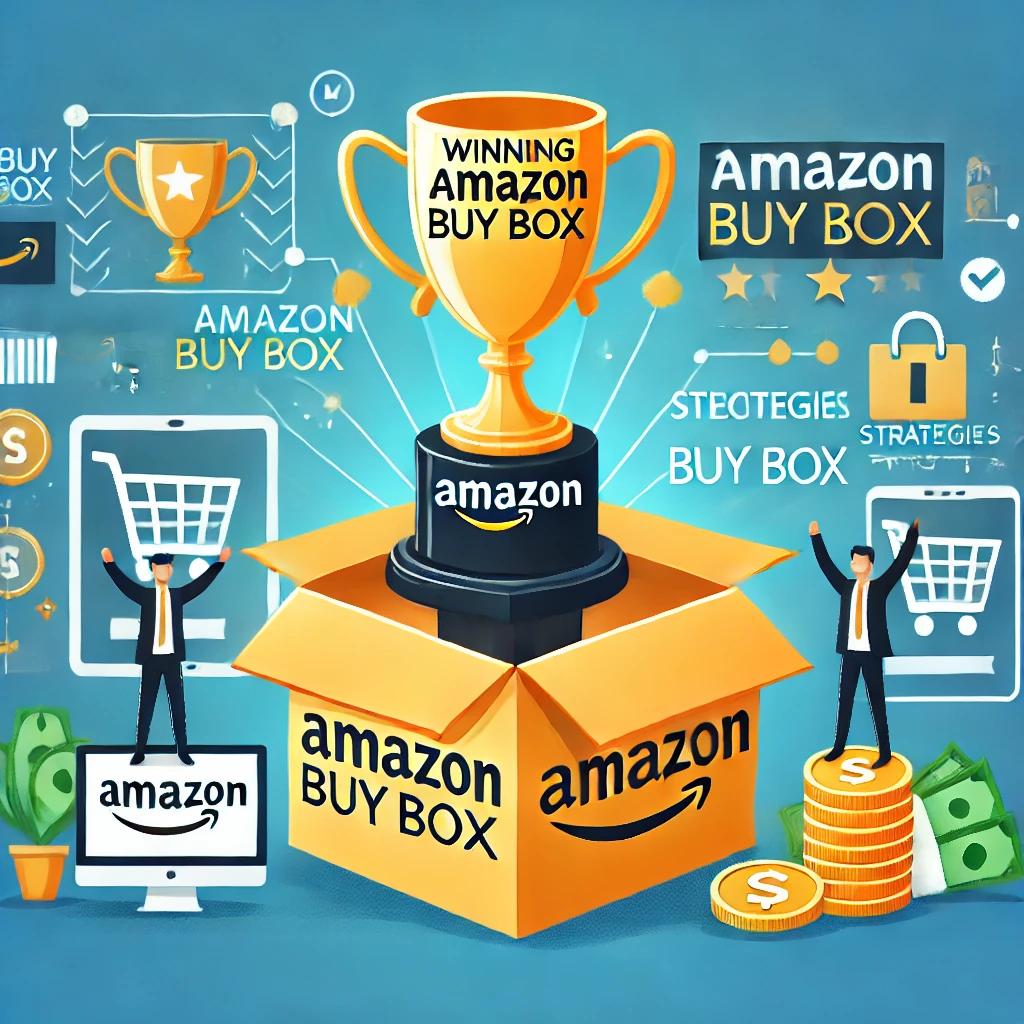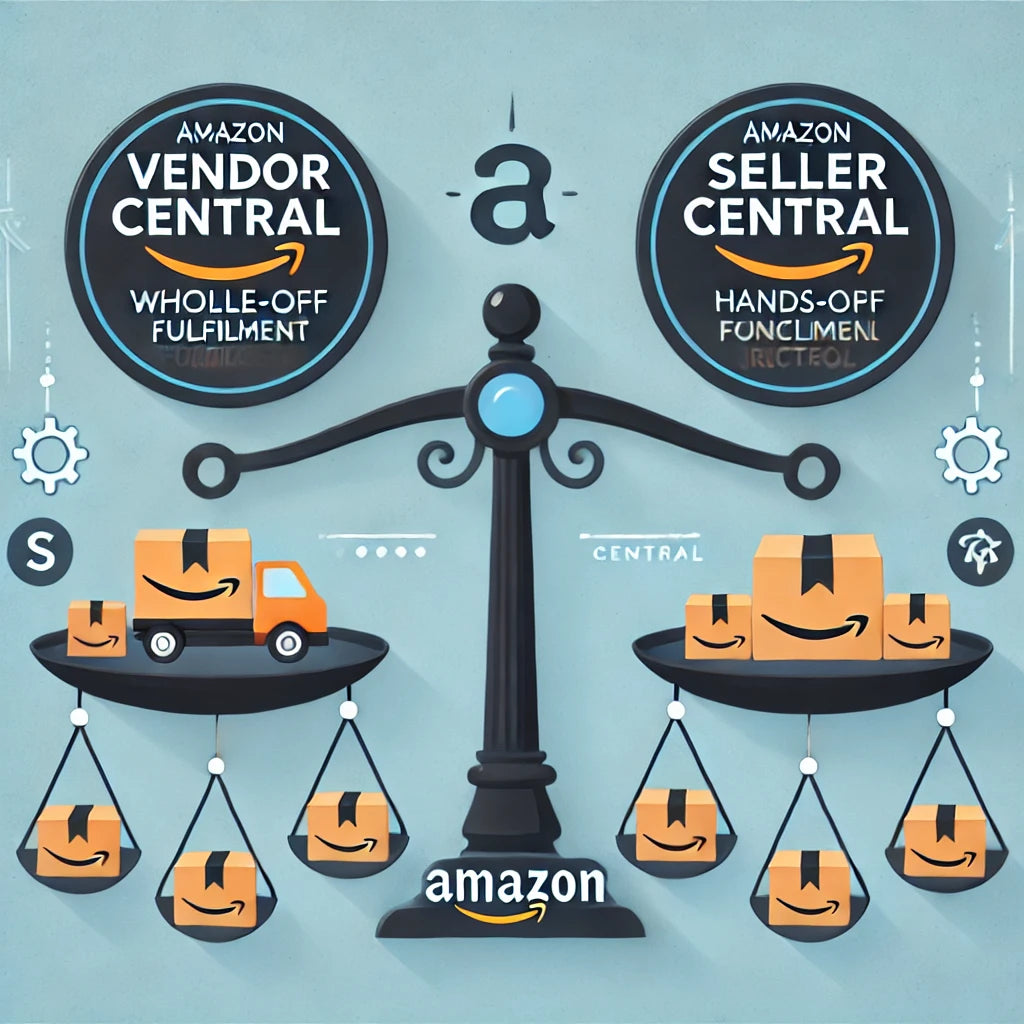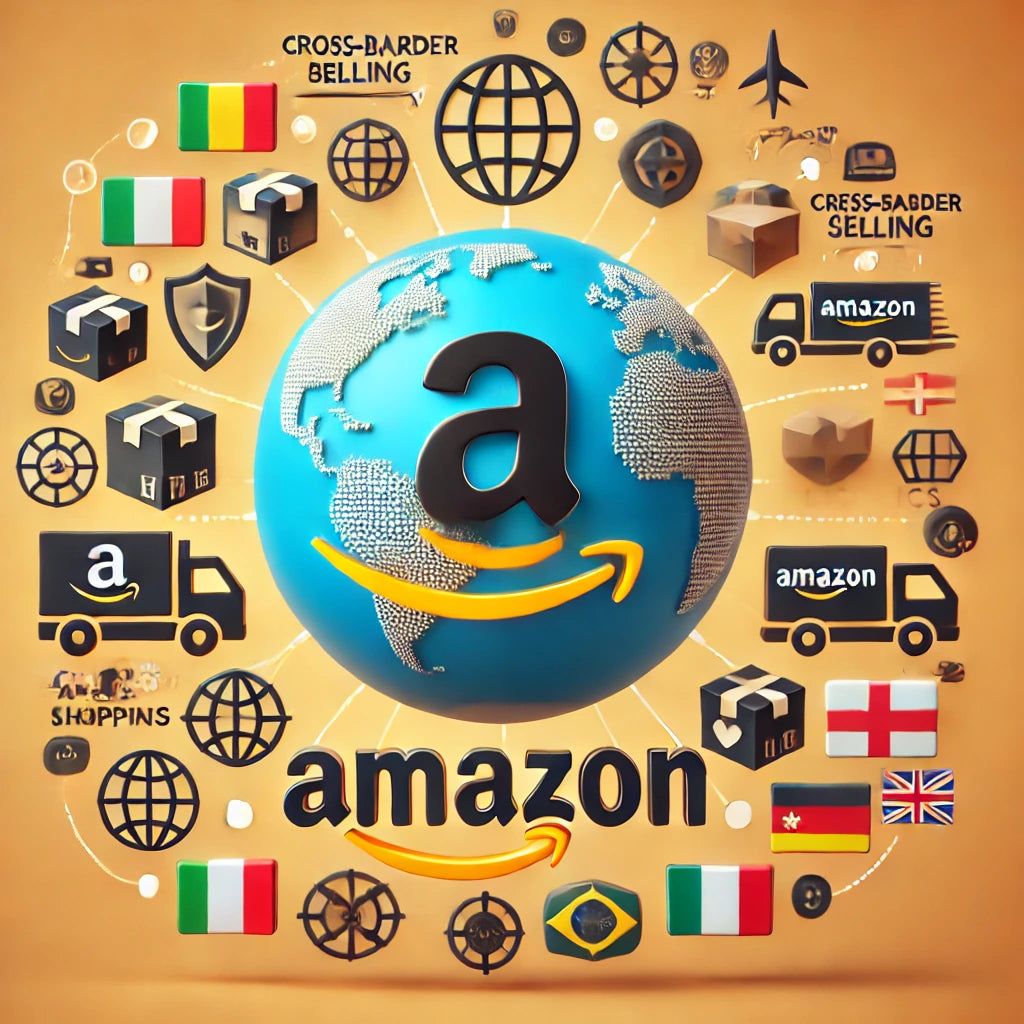STEVE, company.com
Secrets to Winning the Amazon Buy Box: What You Need to Know

Winning the Amazon Buy Box is essential for increasing your sales on the platform. The Buy Box is the section on a product detail page where customers can begin the purchasing process by adding items to their cart. With over 15 years of experience selling on Amazon, I’ve learned the strategies to consistently win the Buy Box.
In this guide, I’ll share my insights on how you can improve your chances of securing this valuable spot.
Understanding the Buy Box: The Buy Box is awarded to sellers who meet Amazon’s performance-based criteria. These criteria include factors such as pricing, shipping time, customer feedback, and inventory levels. Winning the Buy Box means more visibility and, ultimately, more sales.
To optimize your listings for better performance, check out The Ultimate Guide to Optimizing Your Amazon Product Listings.
Key Factors Influencing the Buy Box:
-
Competitive Pricing:
- Amazon favors sellers who offer competitive prices. Ensure your prices are in line with or lower than your competitors.
- Use repricing tools to automatically adjust your prices based on market conditions.
-
Shipping and Fulfillment:
- Fast and reliable shipping options are crucial. Fulfillment by Amazon (FBA) can give you an edge as it provides Prime shipping and reliable delivery.
- Ensure your fulfillment process is efficient to maintain high performance metrics.
-
Customer Feedback:
- Positive customer reviews and high seller ratings significantly impact your chances of winning the Buy Box.
- Encourage satisfied customers to leave positive reviews and address negative feedback promptly. For more on leveraging customer reviews, see The Power of Customer Reviews and Ratings.
-
Inventory Levels:
- Maintain adequate inventory levels to avoid stockouts. Amazon prefers sellers who can consistently fulfill orders.
- Use inventory management tools to forecast demand and manage stock effectively.
-
Order Defect Rate (ODR):
- Amazon considers your ODR, which includes factors such as negative feedback, A-to-Z claims, and chargebacks.
- Aim to keep your ODR below 1% by providing excellent customer service and resolving issues quickly.
Strategies to Improve Your Buy Box Eligibility:
-
Optimize Your Listings:
- Ensure your product listings are complete, accurate, and optimized for SEO. Use relevant keywords in your titles, bullet points, and descriptions.
- High-quality images and detailed descriptions can also improve your chances of winning the Buy Box. For more on SEO, check out SEO for Amazon Sellers: Best Practices to Rank Higher.
-
Use Fulfillment by Amazon (FBA):
- FBA can enhance your Buy Box eligibility by providing fast, reliable shipping and handling returns.
- Amazon prioritizes FBA sellers because they offer consistent service levels and Prime eligibility. To understand the benefits and drawbacks of FBA, read Using Amazon FBA to Scale Your Business: Pros and Cons.
-
Monitor and Adjust Pricing:
- Use repricing tools to stay competitive without sacrificing margins. Monitor competitor prices and adjust accordingly.
- Consider setting minimum and maximum price limits to avoid significant fluctuations.
-
Maintain Excellent Customer Service:
- Respond to customer inquiries promptly and professionally.
- Resolve issues quickly to maintain high seller ratings and positive feedback.
-
Regularly Review Performance Metrics:
- Keep an eye on your performance metrics, including ODR, late shipment rate, and feedback score.
- Use Amazon Seller Central reports to track your performance and identify areas for improvement. For more on analyzing sales data, see Analyzing Amazon Sales Data: Metrics and KPIs You Should Track.
Common Mistakes to Avoid:
- Ignoring Repricing: Not using repricing tools can make you less competitive in price-sensitive markets.
- Neglecting Customer Service: Poor customer service can lead to negative feedback and a higher ODR.
- Stockouts: Running out of stock can hurt your Buy Box eligibility. Always keep an eye on your inventory levels.
Real-Life Example: I once helped a seller who struggled with inconsistent Buy Box wins. By implementing FBA, optimizing their listings, and using a repricing tool, they saw a significant improvement. Their sales increased, and they consistently won the Buy Box, leading to a more stable and profitable business.
Conclusion: Winning the Amazon Buy Box is crucial for maximizing your sales potential on the platform. By focusing on competitive pricing, fast and reliable shipping, positive customer feedback, and maintaining adequate inventory levels, you can improve your chances of securing the Buy Box.
Regularly review your performance metrics and adjust your strategies to stay competitive and ensure long-term success.
Related articles
Amazon Vendor Central vs. Seller Central: Which is Right for You?
STEVE | 25 Jun 2024Deciding between Amazon Vendor Central and Seller Central is a crucial step for your Amazon business strategy. Each platform has its own set of benefits and challenges. With over 15 years of experience selling on Amazon, I’ve had the opportunity to work with both. In this guide, I’ll break down the key differences between Vendor Central and Seller Central to help you decide which is the best fit for your business. 1. Understanding Vendor Central: Amazon Vendor Central is an invite-only platform where you sell your products directly to Amazon, who then sells them to customers. Pros: Wholesale Model: You sell your products in bulk to Amazon, which can lead to large purchase orders and immediate cash flow. Marketing Support: Vendors often receive marketing support and promotions from Amazon. Hands-Off Fulfillment: Amazon handles all aspects of fulfillment, including shipping and customer service. Cons: Less Control: Limited control over pricing, inventory, and branding. Margin Pressure: Amazon negotiates wholesale prices, which can be lower than what you might achieve through Seller Central. 2. Understanding Seller Central: Amazon Seller Central allows you to sell directly to consumers on the Amazon marketplace, either using Fulfillment by Amazon (FBA) or fulfilling orders yourself. Pros: Greater Control: You have full control over pricing, inventory, and branding. Higher Margins: Potential for higher margins as you set your own prices. Flexibility: More flexibility in managing your sales strategies and product listings. Cons: More Responsibilities: You handle inventory management, pricing strategies, and customer service. Fulfillment Challenges: If you’re not using FBA, you must manage shipping and returns. 3. Key Differences to Consider: Pricing Control: Seller Central gives you more control over pricing, allowing you to adjust based on market conditions. Vendor Central’s wholesale model means Amazon sets the retail price. Branding: Seller Central offers more opportunities for branding through enhanced content and custom storefronts. Vendor Central has limited branding options. Fulfillment: Vendor Central handles all fulfillment and customer service, making it a hands-off process for vendors. Seller Central requires you to manage these aspects unless you use FBA. 4. Which Platform is Right for You? The decision between Vendor Central and Seller Central depends on your business goals and resources. Vendor Central is Ideal for: Businesses with high-volume, low-margin products. Those seeking a hands-off approach to fulfillment and customer service. Brands looking for immediate large purchase orders and cash flow. Seller Central is Ideal for: Businesses seeking greater control over pricing, branding, and inventory. Those willing to manage fulfillment and customer service, or those using FBA. For more on using FBA, check out Using Amazon FBA to Scale Your Business: Pros and Cons. Brands aiming for higher margins and flexible sales strategies. Personal Experience and Advice: When I first started, I used Seller Central because it gave me the control I needed to build my brand. However, as my business grew, I saw the benefits of Vendor Central for larger volume sales. My advice? Start with Seller Central to establish your brand and understand the marketplace dynamics. Once you’re ready for larger orders and want to offload fulfillment responsibilities, consider Vendor Central. Conclusion: Choosing between Amazon Vendor Central and Seller Central depends on your business goals, resources, and the level of control you want over your products. Both platforms offer unique benefits that can help you grow your Amazon business. By understanding the key differences and evaluating your specific needs, you can make an informed decision that aligns with your business strategy
Read moreCross-Border Selling on Amazon: A Comprehensive Guide
STEVE | 25 Jun 2024Expanding your business internationally through Amazon's cross-border selling program can open up a world of opportunities. However, it also comes with its own set of challenges. With over 15 years of experience navigating the complexities of Amazon’s marketplace, I’ve learned the ins and outs of selling across borders. Let’s dive into the strategies and best practices for successful cross-border selling on Amazon. 1. Understanding Market Demand: Before diving into cross-border selling, it’s crucial to understand the demand in your target markets. Market Research: Use tools like Jungle Scout and Helium 10 to assess market demand and competition in different countries. Analyze search trends and customer preferences. Local Trends: Keep an eye on local trends and seasonal variations that may affect demand. This will help you stock the right products at the right time. 2. Compliance and Regulations: Each country has its own set of regulations and compliance requirements. Understanding these is key to avoiding legal issues and ensuring smooth operations. Customs and Duties: Research the customs regulations and duties for each country you plan to sell in. Factor these costs into your pricing strategy. Product Compliance: Ensure your products meet the safety and compliance standards of the target market. This may include certifications, labeling requirements, and safety standards. 3. Fulfillment Options: Choosing the right fulfillment option is crucial for efficient cross-border selling. Fulfillment by Amazon (FBA): FBA is a popular choice for cross-border sellers due to its extensive logistics network and customer service. Amazon handles storage, packaging, and shipping, which simplifies the process. Third-Party Logistics (3PL): If FBA is not a viable option, consider partnering with a reliable third-party logistics provider that specializes in international shipping. 4. Pricing Strategy: Setting the right price for your products in international markets can be challenging. Currency Fluctuations: Monitor currency exchange rates and adjust your prices accordingly to maintain profitability. Competitive Pricing: Research the pricing of similar products in your target market and adjust your prices to stay competitive while covering additional costs like shipping and customs duties. 5. Marketing and Localization: Adapting your marketing strategy to fit the local culture and language can significantly impact your success. Localization: Translate your product listings, marketing materials, and customer service communications into the local language. Consider cultural nuances to ensure your message resonates with local customers. Advertising: Utilize Amazon’s advertising tools to target customers in your chosen markets. Sponsored Products and Sponsored Brands can help increase visibility and drive sales. Personal Experience and Advice: When I first ventured into cross-border selling, I underestimated the importance of localization. Adapting my listings and marketing strategy to fit the local culture and language made a significant difference in my sales. My advice? Invest time and resources into understanding and adapting to each market you enter. Conclusion: Cross-border selling on Amazon offers immense growth potential, but it requires careful planning and execution. By understanding market demand, complying with local regulations, choosing the right fulfillment option, setting a competitive pricing strategy, and localizing your marketing efforts, you can successfully expand your business internationally. A Word of Advice: Remember, patience and persistence are key to successful cross-border selling. Stay informed about market trends, continuously optimize your strategy, and be prepared to adapt to new challenges. And don’t forget to enjoy the journey—exploring new markets can be an exciting adventure
Read more

